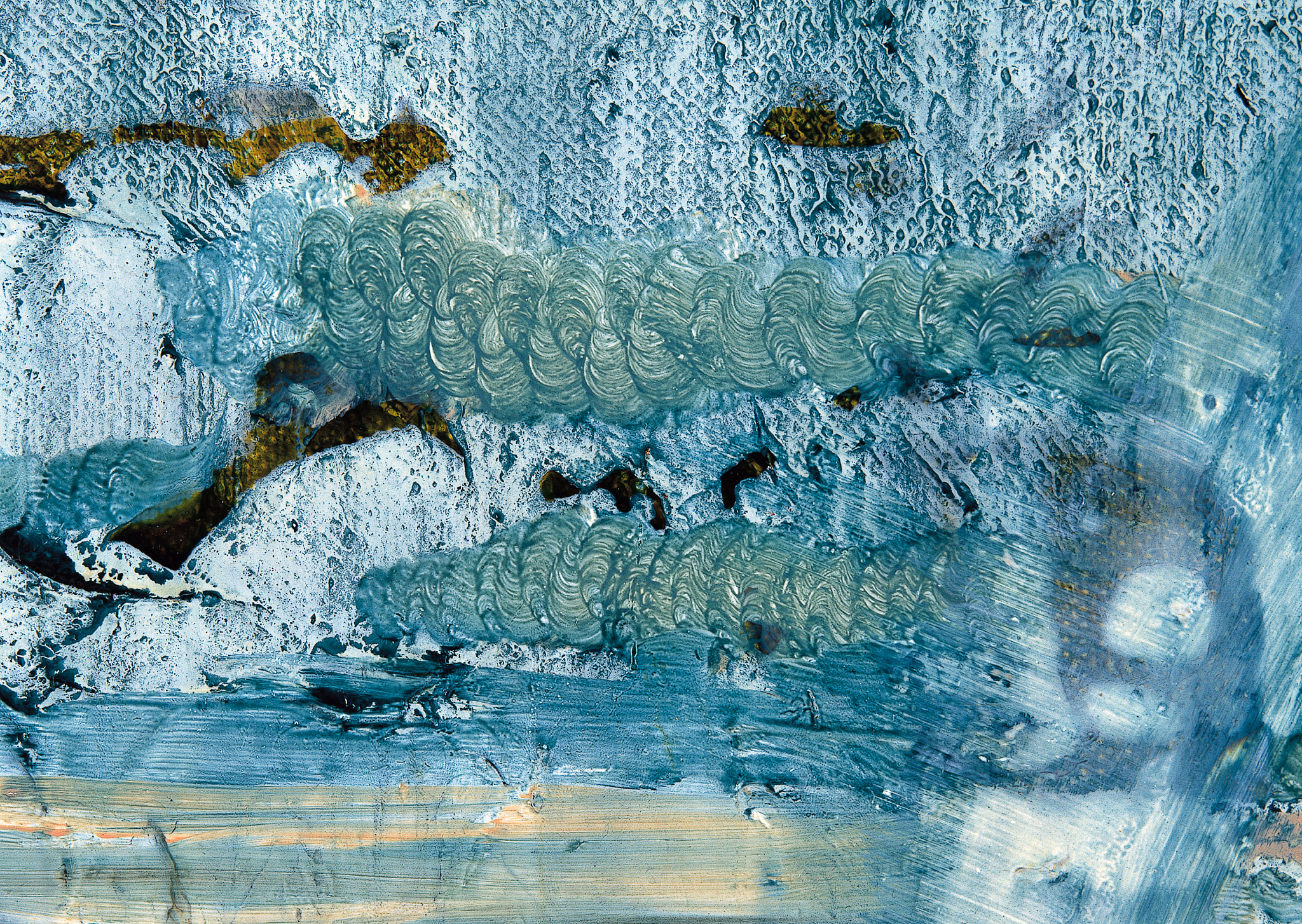翻译:画面的肌理不仅作为广泛使用的绘画语言同时也成为了艺术家特有的情感符号。表现主义画家在作品的创作中往往会添加一些额外元素例如塔皮埃斯为了表现战争过后城市满目疮痍的效果用沙石、玻璃碎片、钥匙等作为语言但目的只是为了更加丰富表达审美趣味;波洛克为了使自己的画面不再平坦光滑作品能够产生一种凹凸不平的触感便在油画颜料中加沙或其它异质物如用加小木片或棉线的方法来达到想要的效果。 胡又笨将浸染色彩的宣纸揉
The texture of the image not only serves as a widely used language in painting but also becomes a unique emotional symbol for artists. Expressionist painters often add additional elements to their works, such as Tapies using sand, glass shards, and keys to depict the effects of post-war devastation in cities. However, the purpose is only to enrich and express aesthetic taste. Pollock, in order to create a textured and uneven tactile sensation in his paintings, adds sand or other heterogeneous materials to his oil paints, such as using small pieces of wood or threads to achieve the desired effect.
Hu Youben crumples the dyed rice paper to create folds, replacing the appearance of mountains in reality with microscopic rock textures, reflecting the texture of ink and wash paintings. The abstractness and uncertainty of material texture are also reflected in the distance between it and real life. The choice of texture is placed in an appropriate aesthetic image, and texture also has more space for expression in the field of heavily colored landscape paintings. When researching new materials or techniques, it is necessary to experiment with the texture of the material before the concept is formed, analyze whether it aligns with the thematic content, and then integrate it into the painting to create a fusion of reality and artistic conception, in order to present a unified texture and spirit

原文地址: https://www.cveoy.top/t/topic/icol 著作权归作者所有。请勿转载和采集!